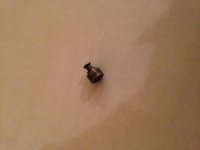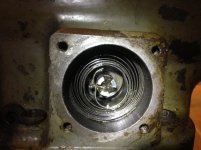dusty1313
Plastic
- Joined
- Jan 18, 2008
- Location
- scottsdale arizona
Something broke inside my old SB mill. I am in hopes someone can direct me to some help (a parts diagram, a schematic, a break down sheet) or advice. Basically a small pin on the left side of the head fell out yesterday while using an end mill. It is located directly below a large round plate (approx. 2-1/2" diameter). See pics. And the ram fell straight down to the table ! It wont raise and it wont adjust up/down. Couple of questions 1) How does it come apart to get to this part ? 2) How serious of an issue is this 3) where on earth do I get a replacement part once it is identified ?
Thanks in advance.
dusty
Thanks in advance.
dusty






 (that's not say much)
(that's not say much)